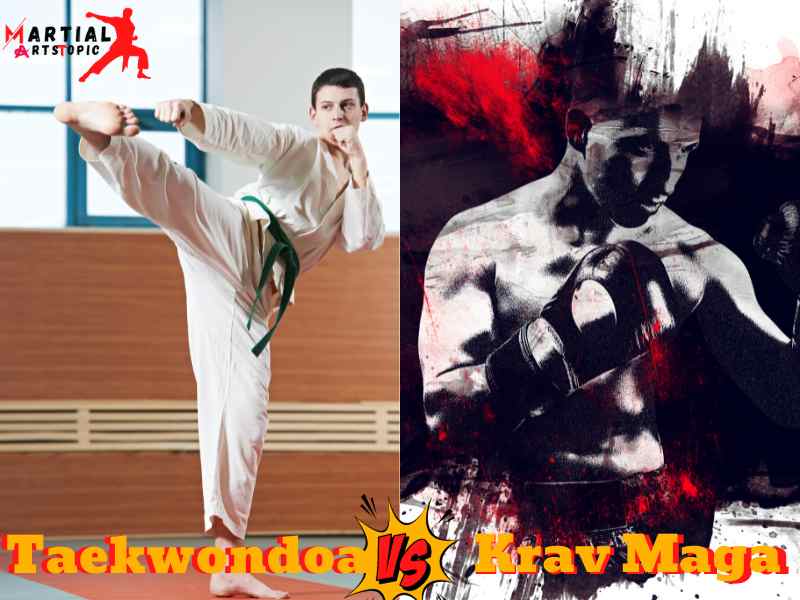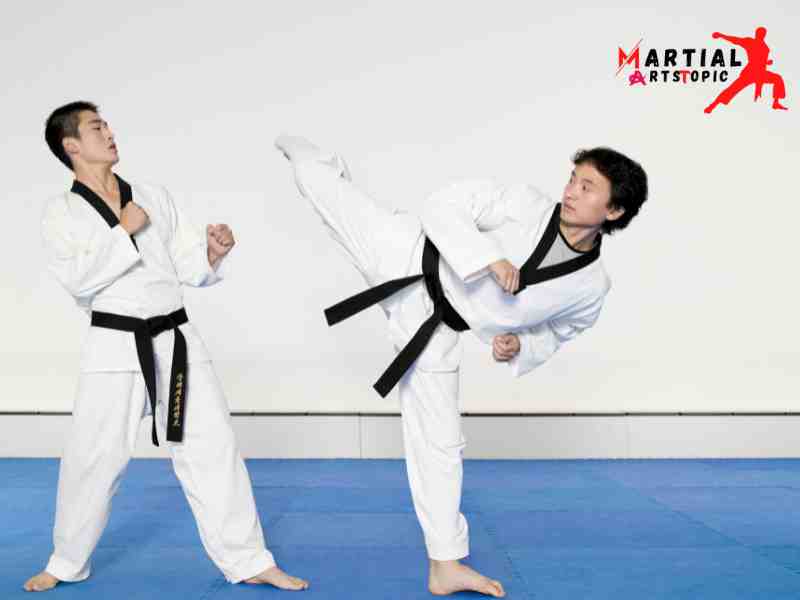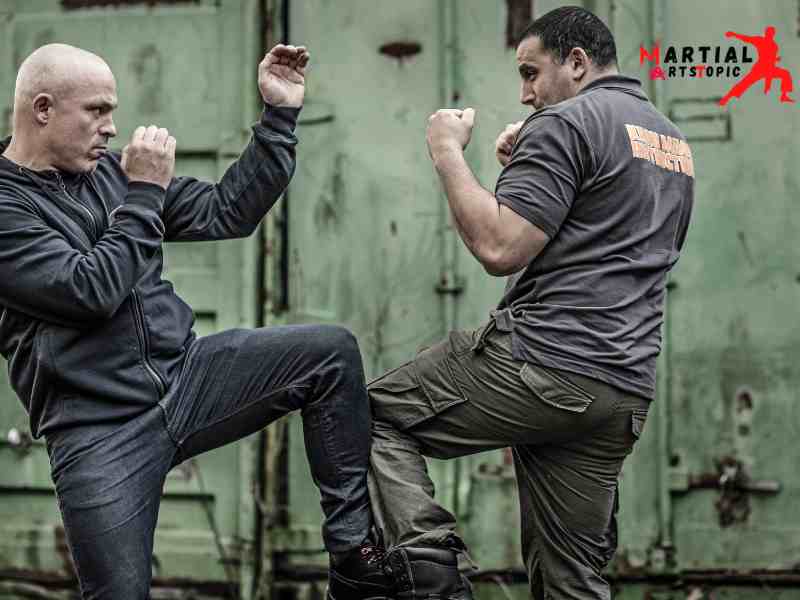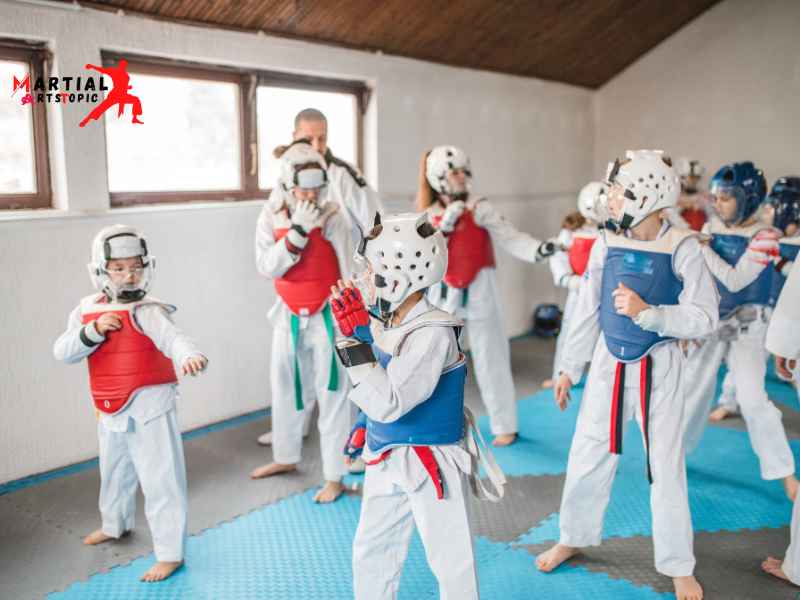
The Origins and Philosophies of Taekwondo and Krav Maga
Taekwondo vs Krav Maga: Exploring the Origins and Philosophies of Two Dynamic Martial Arts When it comes to self-defense and martial arts, two disciplines that often come to mind are Taekwondo and Krav Maga. Both practices have gained significant popularity worldwide, attracting practitioners of all ages and skill levels. In this blog post, we will delve into the origins and philosophies of Taekwondo and Krav Maga, showcasing their unique approaches to self-defense and highlighting their key differences.
The Origins of Taekwondo
Taekwondo, which translates to “the way of the hand and foot,” originated in Korea thousands of years ago. It was heavily influenced by traditional Korean martial arts, such as Taekkyeon and Subak. However, it wasn’t until the mid-20th century that Taekwondo took its modern form. The martial art was officially established in 1955 and gained international recognition as an Olympic sport in 2000.
The Philosophies of Taekwondo
Taekwondo emphasizes the development of both physical and mental strength. It combines various techniques, including kicks, punches, and strikes, focusing strongly on fluid and precise movements. Taekwondo practitioners strive for balance, discipline, and respect for oneself and others. The practice also places great importance on self-defense techniques and personal growth, promoting confidence and perseverance.
The Origins of Krav Maga
Unlike Taekwondo, which has deep historical roots, Krav Maga is a relatively modern martial art developed in the late 1930s. Imi Lichtenfeld, a Hungarian-Israeli martial artist, found i to meet the need for efficient self-defense techniques in the face of growing anti-Semitic violence. Krav Maga draws influences from various combat styles, such as boxing, wrestling, and street-fighting.
The Philosophies of Krav Maga
Krav Maga focuses on real-life self-defense situations, making it an effective martial art for both military personnel and civilians. It prioritizes quick and instinctive responses, teaching practitioners how to neutralize threats efficiently. Krav Maga also emphasizes situational awareness, teaching students to assess their surroundings and make split-second decisions to protect themselves and others.
Key Differences between Taekwondo and Krav Maga
Despite the similarities in their goal of self-defense, Taekwondo and Krav Maga differ significantly in their techniques and philosophies. We know Taekwondo for its dynamic kicks, agility, and focus on traditional forms or patterns (known as “poomsae“). It is also a competitive sport with a strong emphasis on sparring and tournaments.
On the other hand, Krav Maga prioritizes practical self-defense techniques, including strikes to vulnerable areas, aggressive counterattacks, and effective grappling moves. It does not have any forms or patterns and is less focused on sports competition.
What is Taekwondo?

Taekwondo, also known as Taekwon-Do, is a dynamic and popular martial art that originated in Korea. Combining powerful kicks, strikes, and blocks, Taekwondo provides practitioners with physical fitness, self-defense skills, and mental discipline. With its emphasis on speed, agility, and accuracy, Taekwondo has become a widely practiced sport and an official Olympic event. Whether you are looking to improve your fitness level, learn self-defense techniques, or compete at the highest level, Taekwondo offers a comprehensive training system that promotes physical strength, flexibility, and mental focus. Discover the art of Taekwondo and unlock your true potential today.
What is Krav Maga?
Krav Maga, also known as Israeli self-defense, is a highly effective martial art and combat system. Developed for the Israeli military, Krav Maga combines techniques from various martial arts, boxing, and wrestling to create a practical method of self-defense. The core principles of Krav Maga focus on neutralizing threats quickly and decisively, making it suitable for people of all ages and fitness levels. In Krav Maga training, practitioners learn to defend against common attacks, such as punches, kicks, and chokes, as well as more specific scenarios like multiple attackers or armed assailants. With its emphasis on real-world situations and practical techniques, Krav Maga has gained popularity worldwide as a self-defense system that anyone can learn.
The Differences and Similarities between Taekwondo and Krav Maga
Taekwondo vs Krav Maga: Unveiling the Differences and Similarities When it comes to martial arts, there are countless styles to choose from, each with its own unique characteristics and benefits. Two popular disciplines that often spark interest are Taekwondo and Krav Maga. In this blog post, we will dive deep into the world of Taekwondo and Krav Maga, exploring their differences and similarities.

Taekwondo, a Korean martial art, focuses on high, fast, and powerful kicks, as well as dynamic punch and strike techniques. It places great emphasis on agility, flexibility, and coordination. Taekwondo practitioners learn a wide variety of kicks, including spinning and jumping kicks, making it a visually stunning and exciting martial art to watch.
On the other hand, Krav Maga, a self-defense system developed in Israel, is known for its efficiency and effectiveness in real-world situations. Unlike Taekwondo, Krav Maga combines striking, grappling, and wrestling techniques, making it a versatile and practical martial art. Krav Maga is all about neutralizing threats quickly and decisively, focusing on practical self-defense skills that can be used in real-life scenarios.
Now, let’s inspect the key differences between Taekwondo and Krav Maga.
- Focus: Taekwondo is primarily a sport and martial art, emphasizing strength, flexibility, and discipline. Krav Maga, on the other hand, is a self-defense system designed for real-world situations, focusing on practical techniques to neutralize threats.
- Techniques: Taekwondo emphasizes high kicks, spinning kicks, and fast strikes, showcasing the practitioner’s agility and speed. Krav Maga, however, incorporates a broader range of techniques, including punches, kicks, knee strikes, elbow strikes, and grappling techniques, allowing for a more comprehensive approach to self-defense.
- Training Objectives: Taekwondo training focuses on developing physical fitness, self-discipline, and mental strength. It is also a competitive sport with tournaments and ranking systems. In contrast, Krav Maga’s primary goal is to teach practical self-defense skills that can be utilized in real-life situations, promoting personal safety and survival instincts.
Despite their differences, Taekwondo and Krav Maga also share some similarities:
- Self-Defense: Both Taekwondo and Krav Maga place a strong emphasis on self-defense. While their approaches may differ, both disciplines aim to equip practitioners with the skills and confidence to defend themselves effectively.
- Discipline: Both martial arts require discipline and commitment. Practitioners of both Taekwondo and Krav Maga must dedicate themselves to training, learning techniques, and honing their skills.
- Physical Fitness: Both Taekwondo and Krav Maga provide excellent workouts that improve cardiovascular fitness, strength, flexibility, and overall physical conditioning. Engaging in either discipline can lead to enhanced endurance, agility, and coordination.
If you are interested in martial arts, consider exploring both Taekwondo and Krav Maga to determine which one aligns better with your goals and personal preferences. No matter which path you choose, both disciplines can have a transformative impact on your physical fitness, mental well-being, and self-confidence.
Taekwondo vs Krav Maga: Unveiling the Secrets of Two Martial Arts
In the world of martial arts, two disciplines have garnered immense popularity and respect – Taekwondo and Krav Maga. Both Taekwondo and Krav Maga offer unique training methods and philosophies, making them intriguing choices for self-defense and personal growth. In this blog, we delve into the world of Taekwondo and Krav Maga, uncovering the secrets behind these martial arts and helping you understand the differences between them.
Taekwondo: The Art of Kicking and Punching
Taekwondo, a Korean martial art, is primarily recognized for its dynamic and high-flying kicks. With its origins dating back over 2,000 years, Taekwondo emphasizes the use of legs and feet as powerful weapons. The word “Tae” means foot, “Kwon” means fist, and “Do” means the way or path. Taekwondo practitioners focus on developing strength, flexibility, and agility through rigorous training, which includes techniques like strikes, blocks, and kicks.
The fundamental principle of Taekwondo is to strike with precision and speed, delivering powerful kicks and punches to immobilize opponents. Taekwondo also emphasizes self-discipline, respect, and mental fortitude, instilling essential life values in its practitioners. Whether you are a beginner or an advanced practitioner, Taekwondo offers a comprehensive martial arts system that promotes physical fitness, self-confidence, and self-defense skills.
Krav Maga: The Art of Self-Defense

In contrast to Taekwondo, Krav Maga is a modern and practical self-defense system developed for the Israeli military. Created by Imi Lichtenfeld, Krav Maga combines techniques from various martial arts, such as boxing, wrestling, judo, and karate. The main objective of Krav Maga is to neutralize threats quickly, utilizing both defensive and offensive moves.
Unlike traditional martial arts, Krav Maga focuses on real-life situations, teaching practitioners to defend themselves against armed and unarmed attackers. It emphasizes practical techniques that can be executed effectively under stress. Krav Maga training involves a combination of strikes, kicks, grappling, and ground fighting, along with defensive tactics against multiple attackers, knife attacks, and firearm threats.
Ultimately, the choice between Taekwondo and Krav Maga depends on your personal goals and preferences. Whether you seek to enhance your physical fitness, improve self-defense skills, or gain discipline and mental fortitude, both Taekwondo and Krav Maga can provide valuable benefits on your martial arts journey.
So, whether you prefer the high-flying kicks of Taekwondo or the practical self-defense techniques of Krav Maga, these martial arts have secrets waiting to be unveiled, ready to empower you on your path to self-improvement and personal growth.
Training Tips: How to Get Started in Taekwondo or Krav Maga
Are you passionate about martial arts and looking to delve into the world of self-defense? Taekwondo and Krav Maga are two popular martial arts disciplines that offer unique training experiences. In this blog post, we will explore the fundamentals of Taekwondo and Krav Maga, and provide you with essential training tips to get started. So, whether you’re interested in the beauty and grace of Taekwondo or the practical self-defense techniques of Krav Maga, let’s dive in and discover which one suits you best!
Understanding Taekwondo
Taekwondo is a Korean martial art known for its emphasis on high kicks and fast-paced movements. It focuses on building strength, flexibility, and coordination while cultivating discipline and mental fortitude. Taekwondo training includes various techniques such as punches, kicks, blocks, and stances. It is also a competitive sport with a strong emphasis on sparring. Taekwondo practitioners often develop exceptional agility, balance, and a deep sense of self-confidence.
Getting Started in Taekwondo
- Find a reputable Taekwondo school: Look for certified instructors and schools affiliated with recognized organizations. This ensures you receive proper guidance and training.
- Start with a beginner’s class: we typically divide Taekwondo classes into different levels. Starting with a beginner’s class allows you to learn the foundational techniques and gradually progress at your own pace.
- Focus on flexibility and strength training: Taekwondo requires a high level of flexibility. Incorporate stretching exercises and strength training routines into your practice to improve your overall performance.
- Practice basic techniques: Mastering the basic techniques such as punches, kicks, and blocks is crucial. Practice them repeatedly to build muscle memory and improve your form.
- Participate in sparring sessions: Sparring helps develop your reflexes, timing, and strategy. Engaging in controlled combat with fellow practitioners will enhance your skills and build confidence.
Exploring Krav Maga
Krav Maga, on the other hand, is a self-defense system developed by the Israeli military. Unlike traditional martial arts, Krav Maga focuses on real-life scenarios and practical techniques that can be applied in street fights or dangerous situations. It combines elements of boxing, wrestling, judo, and street fighting to create a no-nonsense approach to self-defense.
Getting Started in Krav Maga
- Find a certified Krav Maga instructor: Look for instructors who have undergone proper training and are associated with reputable Krav Maga organizations.
- Attend introductory classes: Most Krav Maga schools offer introductory classes designed to familiarize beginners with the basic principles and techniques of the discipline. Take advantage of these classes to gain a solid foundation.
- Learn self-defense techniques: Krav Maga places a strong emphasis on practical self-defense techniques such as strikes, kicks, and grappling. Focus on learning and mastering these techniques through regular practice.
- Develop situational awareness: Krav Maga teaches you to be aware of your surroundings and potential threats. Practice situational awareness exercises to sharpen your instincts and ability to respond effectively.
- Train with intensity and aggression: Krav Maga is known for its high-intensity training sessions. Push yourself physically and mentally, and embrace the mindset of being assertive and proactive in defending yourself.
Taekwondo vs. Krav Maga: Which is Right for You?
Choosing between Taekwondo and Krav Maga depends on your personal goals and preferences. If you’re interested in a traditional martial art that focuses on discipline, flexibility, and competitive sparring, Taekwondo might be the perfect fit. On the other hand, if your major priority is practical self-defense techniques that can be applied in real-life situations, Krav Maga could be the ideal choice.
The Benefits of Taekwondo: Why It’s a Great Choice for Self-Defense

The Benefits of Taekwondo: Why It’s a Great Choice for Self-Defense When it comes to self-defense, there are several martial arts disciplines to choose from. Two popular options that often come up in the discussion are Taekwondo and Krav Maga. While both are effective forms of self-defense, today we’ll focus on the benefits of Taekwondo and why it’s a brilliant choice for those looking to protect themselves.
Taekwondo, a Korean martial art, has gained worldwide recognition for its dynamic kicks and rapid footwork. It is known for its emphasis on high, fast, and spinning kicks, making it a highly effective fighting style. Let’s explore the benefits of Taekwondo and why it might be the perfect fit for your self-defense needs.
- Self-defense skills: Taekwondo is renowned for its practical self-defense techniques. Through rigorous training and practice, practitioners learn how to strike with precision and power, disarm opponents, and defend against various attacks. By mastering Taekwondo, you can develop the skills necessary to protect yourself in real-life situations.
- Increased fitness and agility: Taekwondo is a full-body workout that enhances your overall fitness and agility. It combines cardiovascular exercise with strength training, helping you build endurance, flexibility, and core strength. Regular Taekwondo training can improve your coordination, balance, and reflexes, making you more agile and better prepared to defend yourself.
- Mental discipline and focus: Taekwondo is not just about physical strength; it also promotes mental discipline and focus. The training involves memorizing and performing intricate patterns of movements, known as forms or patterns, which require concentration and discipline. Through consistent practice, Taekwondo cultivates mental clarity, self-control, and the ability to stay calm and focused in stressful situations.
- Confidence and self-esteem: As you progress in Taekwondo and witness your own growth and improvement, your confidence and self-esteem naturally increase. Taekwondo teaches you to believe in yourself and your abilities, empowering you to face challenges head-on. This newfound confidence can have a positive impact on all aspects of your life, not just self-defense.
- Stress relief and emotional well-being: Training in Taekwondo provides an outlet for stress relief and promotes emotional well-being. The physical activity releases endorphins, which are known as “feel-good” hormones, reducing stress and boosting your mood. Additionally, the supportive and encouraging environment of a Taekwondo class can foster a sense of camaraderie and community, further enhancing your emotional well-being.
In comparison to Krav Maga, which focuses on practical self-defense techniques, Taekwondo offers a unique combination of physical and mental benefits. While Krav Maga may be more suitable for those seeking purely practical self-defense skills, Taekwondo provides a comprehensive approach that encompasses physical fitness, mental discipline, and personal growth.
Training Techniques: Taekwondo vs Krav Maga
In the vast world of martial arts, two popular disciplines stand out for their unique training techniques and practical applications: Taekwondo and Krav Maga. Both disciplines have their roots in different regions and offer distinct approaches to self-defense. If you’re looking to learn a martial art that combines physical fitness, discipline, and effective combat skills, it’s essential to understand the differences between Taekwondo and Krav Maga. In this blog post, we will explore the training techniques of these two martial arts and help you decide which one suits your goals and aspirations.
Taekwondo: The Art of Kicks
Taekwondo, originating from Korea, is known for its high-flying kicks and dynamic movements. It focuses on fast-paced, explosive strikes aimed at incapacitating opponents from a distance. Taekwondo training emphasizes flexibility, agility, and precision.
- a. Kicking Techniques: Taekwondo practitioners spend a significant amount of time perfecting the art of kicks. From basic front kicks to complex spinning and jumping kicks, Taekwondo offers a wide array of striking techniques that allow practitioners to maintain distance and control in a fight.
- b. Forms (Poomsae): Forms, also known as poomsae, are a series of predetermined movements that simulate real fighting scenarios. Practicing forms in Taekwondo helps develop balance, coordination, and muscle memory for effective self-defense.
- c. Sparring: In Taekwondo, controlled sparring is an integral part of training. It allows practitioners to apply their techniques in a simulated combat environment under the supervision of an instructor. Sparring hones reflexes, timing, and strategic thinking.
Krav Maga: Practical Self-Defense
Krav Maga, developed in Israel, prioritizes practical self-defense techniques that can be used in real-life situations. It combines elements of various martial arts, focusing on quickly neutralizing threats and escaping dangerous situations.
- a. Strikes and Defenses: Krav Maga teaches practitioners how to deliver powerful strikes to vulnerable areas of an attacker’s body, such as the groin, eyes, and throat. It also emphasizes defenses against common attacks like punches, kicks, and grabs, enabling individuals to react instinctively in high-pressure situations.
- b. Ground Fighting: Krav Maga places significant importance on ground fighting techniques, as real-life confrontations often end up on the ground. Training includes learning to defend against strikes, chokes, and holds, while also developing the ability to escape and regain control.
- c. Reality-Based Training: Unlike traditional martial arts, Krav Maga doesn’t follow rigid rules or forms. Instead, it focuses on realistic scenarios and stress-inducing training, preparing practitioners to react effectively under intense pressure.
Choosing the Right Martial Art for You
When deciding between Taekwondo and Krav Maga, consider your goals, preferences, and fitness levels. Taekwondo offers a traditional martial arts experience, promoting discipline, physical fitness, and competition. If you’re interested in mastering impressive kicks while embracing the art’s cultural heritage, Taekwondo might be your ideal choice.
On the other hand, if practical self-defense and real-life combat situations are your primary concerns, Krav Maga provides a no-nonsense approach to personal safety. It equips practitioners with the skills and mindset needed to handle potentially dangerous encounters.
From Kicks to Strikes: Unveiling the Fighting Styles of Taekwondo and Krav Maga

Taekwondo vs Krav Maga: Unveiling the Fighting Styles When it comes to martial arts, the world is filled with a vast array of disciplines each with its unique techniques and philosophies. Two popular martial arts that have gained global recognition are Taekwondo and Krav Maga. Both styles are known for their effectiveness in self-defense and physical fitness, but they differ greatly in their origins, techniques, and overall approach.
Taekwondo, a Korean martial art, focuses on high kicks, fast spinning kicks, and jumping kicks. It emphasizes agility, flexibility, and speed. Taekwondo practitioners use their legs as their primary weapon, delivering powerful strikes to their opponents. The art of Taekwondo also incorporates a variety of hand strikes, blocks, and footwork techniques, making it a well-rounded fighting style.
On the other hand, Krav Maga, developed in Israel, is a self-defense system designed to neutralize threats in real-life situations. It prioritizes practicality and efficiency, focusing on street-fighting techniques that anyone can use, regardless of size or physical strength. Krav Maga combines elements from various martial arts, including boxing, wrestling, judo, and karate. Its techniques involve striking, grappling, and ground fighting, aiming to quickly disable an attacker and escape from dangerous situations.
While Taekwondo emphasizes discipline, respect, and self-control, Krav Maga adopts a more aggressive approach. Taekwondo training often involves structured forms, known as poomsae, which are choreographed sequences of movements that help improve balance, coordination, and concentration. On the other hand, Krav Maga training focuses on realistic scenarios and intense physical conditioning to prepare practitioners for real-life encounters.
In terms of self-defense applications, Taekwondo’s long-range kicks can be highly effective against opponents from a distance. Its emphasis on flexibility and speed allows practitioners to generate powerful strikes with precision and accuracy. Krav Maga focuses on close-quarters combat, teaching practitioners how to quickly incapacitate attackers using strikes to vulnerable areas such as the eyes, throat, and groin.
In addition to self-defense, both Taekwondo and Krav Maga offer numerous physical and mental benefits. Taekwondo provides a full-body workout, improving cardiovascular endurance, strength, and flexibility. It also promotes discipline, self-confidence, and mental focus. Krav Maga, on the other hand, enhances overall physical fitness, including strength, stamina, and agility. It also instills a sense of empowerment and self-assurance, as practitioners gain the skills and knowledge to protect themselves and others.
Choosing the Right Martial Art: Taekwondo vs Krav Maga
Choosing the Right Martial Art: Taekwondo vs Krav Maga When it comes to choosing a martial art, there are many options to consider. Two popular choices that often come up in the discussion are Taekwondo and Krav Maga. Both martial arts have their own unique characteristics and benefits, making it important to understand the differences between them before making a decision. In this blog post, we will delve into the world of Taekwondo and Krav Maga to help you make an informed choice.
Taekwondo, a Korean martial art, focuses on high, fast kicks and quick footwork. It emphasizes agility, flexibility, and speed, making it a splendid choice for those who want to improve their cardiovascular fitness and develop excellent lower body strength. Taekwondo training involves a combination of basic kicks, punches, and blocks, as well as patterns and sparring techniques.
On the other hand, Krav Maga, an Israeli martial art, is known for its practical self-defense techniques. Developed for the military, Krav Maga teaches students how to defend themselves in real-life situations using a combination of strikes, grappling, and practical techniques. It focuses on instinctive movements and quick, decisive actions. Krav Maga training also includes scenarios and simulations to prepare students for real-life encounters.
Now, let’s compare Taekwondo and Krav Maga in different aspects to help you decide which martial art is the right fit for you:
- Self-Defense: While both martial arts teach self-defense techniques, Krav Maga is specifically designed for real-life situations and is considered one of the most effective self-defense systems available. Taekwondo, on the other hand, focuses more on traditional forms and may not offer the same level of practical self-defense training.
- Fitness and Conditioning: Taekwondo’s emphasis on kicks and footwork makes it a superb choice for improving cardiovascular fitness, agility, and lower body strength. Krav Maga, on the other hand, is a full-body workout that combines strength, endurance, and explosiveness, making it an excellent choice for overall conditioning.
- Competition and Sport: Taekwondo is an Olympic sport and has a well-established competition scene. It offers opportunities for practitioners to compete at various levels, from local tournaments to international events. Krav Maga, on the other hand, is primarily focused on self-defense and does not have a competitive aspect.
- Philosophy and Training Methods: Taekwondo places a strong emphasis on discipline, respect, and the development of character. Training often includes forms (poomsae) and traditional rituals. Krav Maga, on the other hand, is more focused on practicality and real-world scenarios. Training methods are designed to simulate real-life situations and teach students how to respond effectively.
Ultimately, the choice between Taekwondo and Krav Maga depends on your personal goals and preferences. If you are looking for a martial art that combines self-defense with fitness and discipline, Taekwondo might be the right choice for you. On the other hand, if you are primarily interested in practical self-defense techniques and real-world scenarios, Krav Maga could be the martial art that suits you best.
Taekwondo vs Krav Maga: Which Martial Art is Right for You?
Taekwondo vs Krav Maga: Which Martial Art is Right for You?Are you looking to learn a martial art but can’t decide between Taekwondo and Krav Maga? Both martial arts have their unique features and benefits, making the decision a tough one. In this blog post, we will compare Taekwondo and Krav Maga, helping you to determine which martial art is right for you.

Taekwondo, a Korean martial art, is known for its high kicks and fast-paced movements. It focuses on striking techniques, combining powerful kicks, punches, and blocks. Taekwondo practitioners develop flexibility, agility, and strength through rigorous training. The art also emphasizes discipline, respect, and self-control, instilling important values in practitioners.
On the other hand, Krav Maga, an Israeli martial art, is a self-defense system developed for the military. It is a practical martial art that emphasizes real-world scenarios and self-protection. Krav Maga focuses on teaching self-defense techniques for a variety of situations, including unarmed and armed attacks. It is a no-nonsense martial art that aims to neutralize threats quickly and effectively.
So, how do you choose between Taekwondo and Krav Maga?
- Purpose: Consider why you want to learn a martial art. If your goal is to improve your physical fitness, develop discipline, and compete in tournaments, Taekwondo may be the right choice for you. If your primary goal is to learn self-defense techniques that can be applied in real-life situations, Krav Maga is the way to go.
- Training Style: Taekwondo training often involves high-energy workouts, focusing on technique and form. It requires a certain level of flexibility and coordination. Krav Maga, on the other hand, focuses on practical training that simulates real-life scenarios. It prioritizes intensity and replicates the stress of a dangerous situation, preparing you to react quickly and effectively.
- Personal Preferences: Consider your own personality and preferences. Taekwondo is a traditional martial art that emphasizes discipline, respect, and self-control. If you enjoy the structure and rituals associated with traditional martial arts, Taekwondo may be the right fit for you. If you prefer a more practical and no-nonsense approach to self-defense, Krav Maga might be more appealing.
- Fitness and Self-Defense: Taekwondo is a brilliant choice if you want to improve your overall fitness and flexibility. The high-intensity workouts and emphasis on kicks make it an excellent option for cardiovascular exercise. Krav Maga, on the other hand, focuses on real-world self-defense techniques that can be used in dangerous situations. It teaches you how to defend yourself effectively, regardless of your physical fitness level.
Ultimately, the choice between Taekwondo and Krav Maga depends on your personal goals and interests. If you are looking for a martial art that focuses on traditional forms, physical fitness, and discipline, Taekwondo may be the right choice for you. On the other hand, if your primary goal is to learn practical self-defense skills and improve your confidence in real-life situations, Krav Maga may be a better fit.
Regardless of which martial art you choose, it’s important to find a reputable instructor and training facility. Take the time to visit different schools, talk to instructors, and observe classes to get a sense of the teaching style and atmosphere. Remember, martial arts training requires dedication, discipline, and perseverance. So, choose the martial art that resonates with you and enjoy the journey of self-improvement and personal growth!
In conclusion
Both Taekwondo and Krav Maga are martial arts that offer unique benefits and training methods. Taekwondo focuses on striking techniques, emphasizing speed, agility, and high kicks, while Krav Maga puts a strong emphasis on self-defense and practical combat techniques. Taekwondo is a great choice for those looking to improve their physical fitness, flexibility, and discipline. It offers a structured training system that promotes self-confidence and the development of strong mental focus. Additionally, Taekwondo competitions provide opportunities for individuals to test their skills against others.
On the other hand, Krav Maga is known for its practical self-defense techniques. It focuses on real-world scenarios and teaches students how to respond to various armed and unarmed threats. Krav Maga training also includes combat conditioning and stress drills, preparing individuals to react quickly and effectively in dangerous situations.
Ultimately, the choice between Taekwondo and Krav Maga depends on personal goals and preferences. Taekwondo is more suitable for those seeking a traditional martial art that emphasizes discipline and physical fitness. Krav Maga, on the other hand, is ideal for individuals looking for practical self-defense skills and real-world combat techniques. Whichever path you choose, both martial arts offer valuable skills and can greatly contribute to personal growth and self-confidence.
